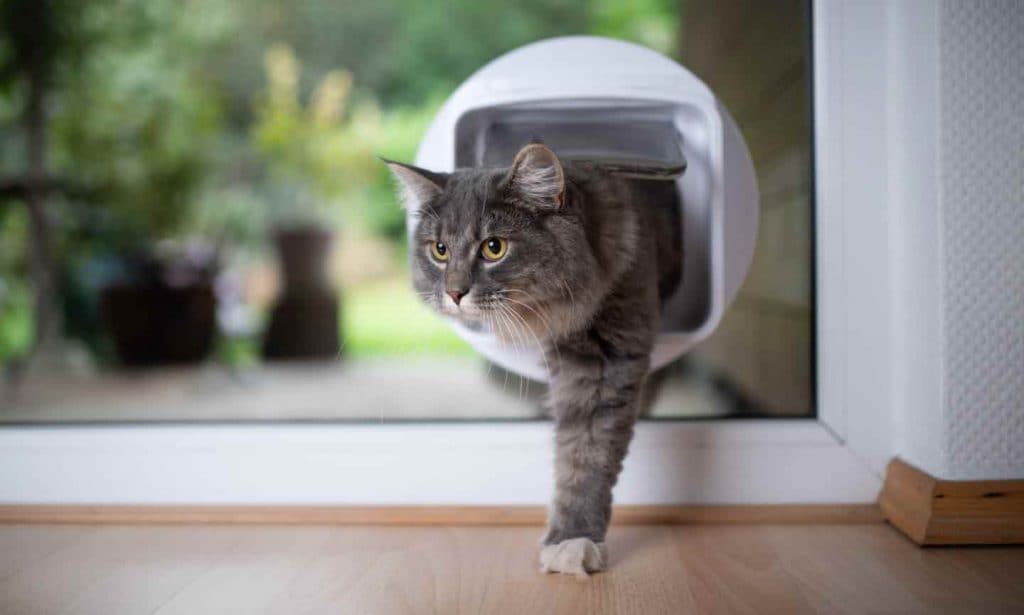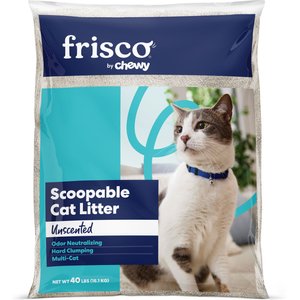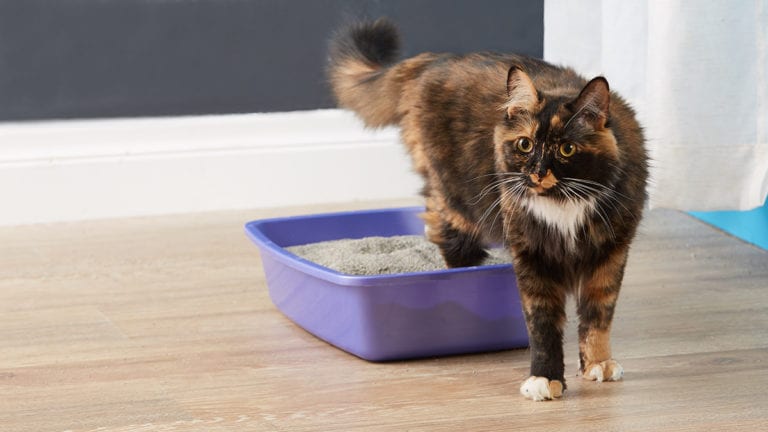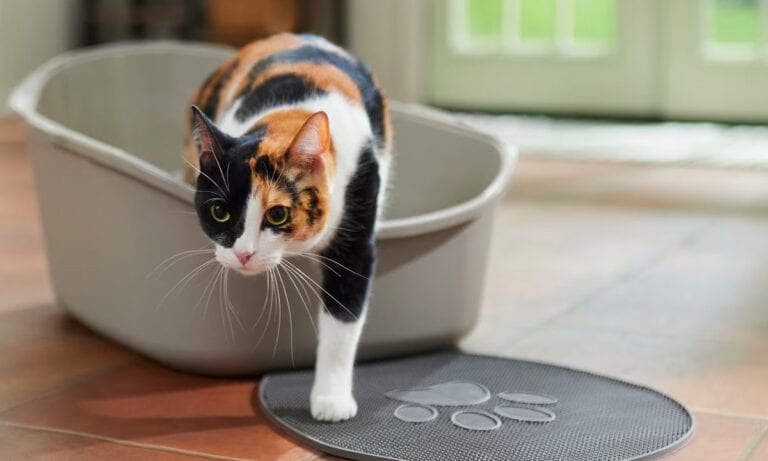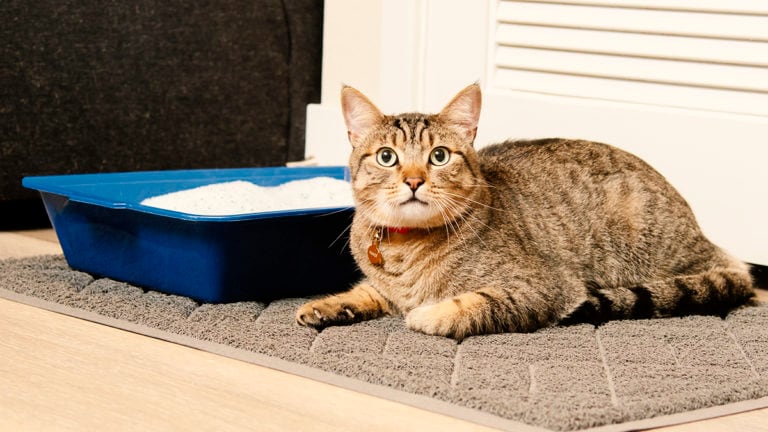Look, kitty litter is a revolutionary product for cat parents. It allows cats to live with us indoors, and often requires very little litter training on our part. But despite its many advantages, scooping pee and poop from a litter box gets old really fast, and some cats experience litter box problems, such as improper elimination, that result in stinky, messy accidents.
As an alternative to using an indoor litter box, you may want to consider teaching your cat how to use the bathroom outdoors. Peeing outside feels natural for many cats, and can solve the issues associated with indoor litter boxes, too.
In This Guide
Benefits of Outdoor Litter Training
There are multiple benefits to training indoor cats to use the bathroom outside. Here are just a few:
Fewer Messes: Many kitty litters can create a mess on your floors, even if your cat is using their litter box perfectly. Whether you use scoopable clay or non-clumping litter, part of your day is dedicated to cleaning up litter trails left behind by granules that stick to your cat’s feet after they step out of the sand. By training a cat to go outside, the litter remains outside, leaving less for you to clean.
A Fresher Smelling Home: An outdoor cat litter box also means less odor inside your home. Odor-eliminating kitty litter is great at masking the scent of excrement, but that doesn't mean you'll never catch a whiff of your cat's latest, uh, deposit. By training your cat to use the litter box outside, you can get rid of litter odor once and for all.
It Feels Natural: Many of our feline friends consider the great outdoors to be nature’s great litter box. Peeing and pooping outside feels natural for them! There are exceptions, of course, like some older cats, disabled cats or very timid cats who prefer to stay indoors at all times.
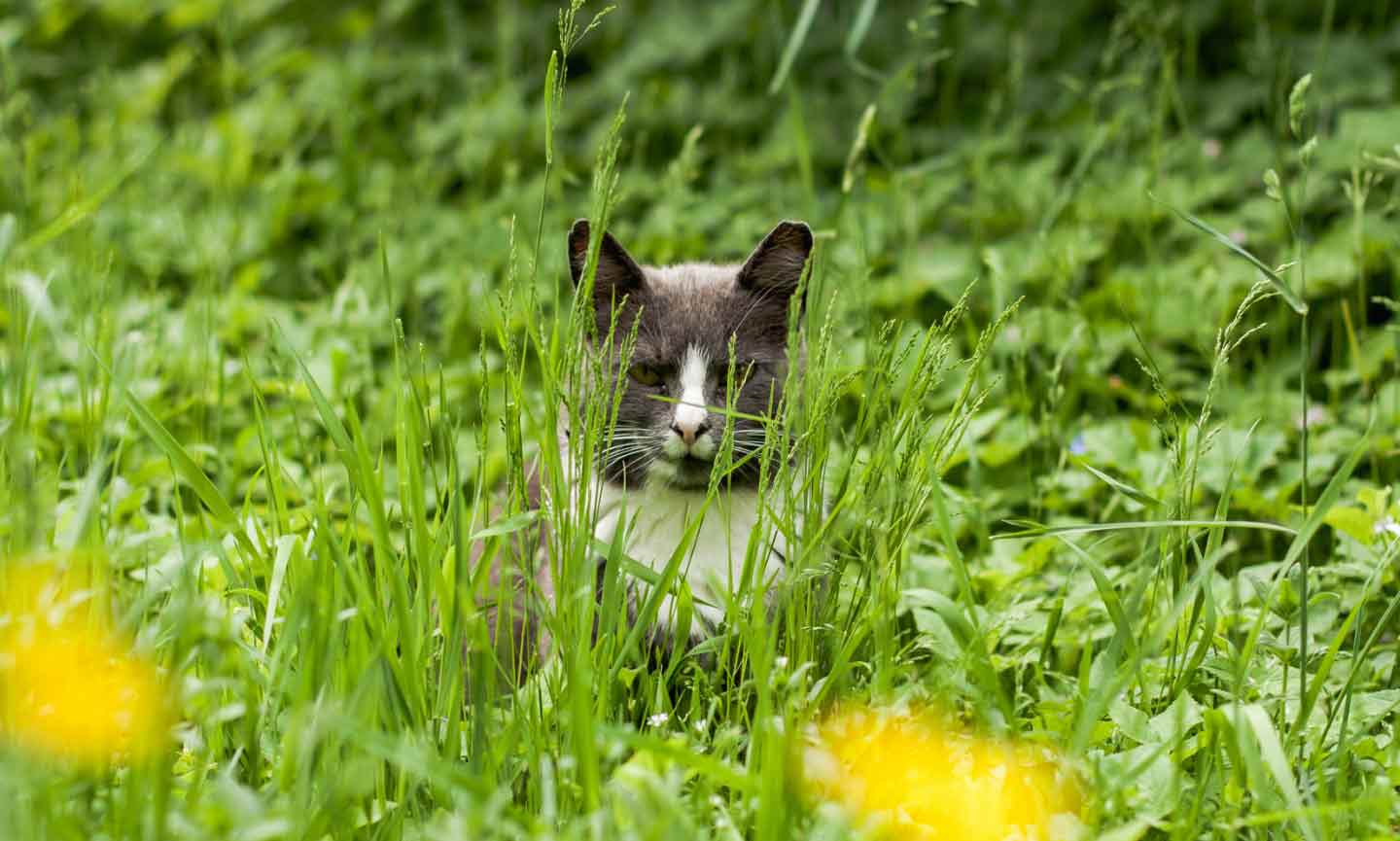
How To Teach Your Cat To Use The Bathroom Outside
Ready to explore the option of potty training your cat for the great outdoors? Here’s the training process:
1Gather Supplies
The good news is that you don’t need a whole lot to teach your cat to poop and pee outside. Here’s what you should gather:
A Cat Door: Your cat needs to be able to exit when they need to go, whether you’re around or not. Installing a cat door allows them to do this.
Sand: Most types of litter, including clumping and non-clumping clay-based litter, turn into a yucky mess when rained on, says Stephen Quandt, a certified feline training and behavior specialist working in New York City. He says to opt for a waterproof litter, such as sand, which drains well. You can also combine it with a substrate, such as peat moss, to hold the sand in place better.
Wooden Frame: This is optional, but Quandt says, “Placing a wooden frame around the litter will hold the litter in place. This frame can be mostly submerged or raised above ground level.” Keeping the sand contained in a frame prevents it from spreading and dissipating over time, which means lower maintenance for you.
2 Guide Your Cat To The Designated Spot
Before you begin, you’ll need to install a cat door—making it easy for your furry friend to come and go as they need. Once it’s in place, show your cat the designated spot for elimination. Ideally, it’s located close to your house so they can easily access it.
If your cat has a difficult time finding and using this spot immediately, it’s helpful to use a regular litter box to help them transition. Begin gradually moving their existing indoor litter box closer to the cat door, then place it outside and begin moving it closer to the designated spot. The process can take anywhere from 7 to 10 days, and it’s important you don’t rush through the process.
You can also watch your kitty for signs they need to go, such as meowing, digging on carpets or blankets, and squatting. When it’s time to go, pick them up and place them in the litter box outside. Repeat this step for a few days until they become accustomed to coming outside to use the restroom.
3 Use Positive Reinforcement
Positive reinforcement, aka offering treats, toys or other rewards for good behavior, is the best way to train a cat to use the restroom outside. Offer treats and praise whenever your cat uses the designated spot, and never use punishment or physical force if they’re not doing what you want. These negative tactics can make your cat afraid of you and undermine the training process.
Positive reinforcement also comes in handy for cats who are afraid to use the cat door. To help them overcome this challenge, start with an open cat door and toss some treats through it so your cat has to pop their head out to eat them. Continue this training, tossing the treats further each time to entice them to go all the way through.
Other cats may not understand how to open the door, or are simply too gentle to push it open. To teach them how to use the door, hold the door partially open, and repeat the treat throwing process above. Over time, make the opening smaller so your cat has to push more and more to go through.
4 Keep The Area Clean
While you may find yourself scooping less often with a cat who eliminates outside, you’re not completely off the hook. About once or twice a week, scoop out the poop in their designated spot so it remains an attractive place for them to do their business.
Aside from that, practice patience and continue using positive reinforcement. Over time, your feline friend will likely forget about their indoor litter box and end up preferring to poop and pee outside instead!
Common Reasons for Improper Cat Elimination
If you’re hoping to teach your cat to use the bathroom outside due to problems with improper elimination, ask yourself: Why is my cat having litter box problems? Cats are notoriously clean animals with strong habits and instincts that drive them to use a litter box, so if they routinely pee or poop somewhere else in your home, it may be a sign of a larger problem. Here are some common reasons to consider:
- Medical Issues: The first thing to check for if your cat starts going outside the box is a medical cause. Urinary conditions like urinary tract infections (UTIs), urinary tract stones/crystals in the urine and an inflamed bladder are common in cats, and inappropriate elimination is one of the primary ways your cat is telling you something is wrong.
- Litter Box Dissatisfaction: If your cat isn’t pleased with their litter box situation, they will avoid it. Make sure you’re using a type of litter they prefer, that the box is clean, and that it’s in an area that allows them to feel safe. If you have multiple cats, a good rule is to have one for each cat, plus one extra.
- Anxiety: Nervous or anxious cats may choose to go outside the litter box. This is a form of communication—they’re trying to tell you something. It may be that they’re experiencing separation anxiety, or the stress of having more than one cat or introducing another cat. Changes in their home or schedule can also result in pooping and peeing outside the litter box.
- Marking: Marking (aka spraying) occurs for a few reasons. These include sexual marking, which is more common in non-spayed and non-neutered cats signaling to other mates, as well as affiliate marking which is a signal they miss you or need to communicate something to you (this might be the case if they’re peeing on your belongings). Some cats also engage in territorial marking, which can happen if they see a neighbor cat through the window or are in a home with another cat and want to claim their territory.
More Litter Box Tips
Share:
